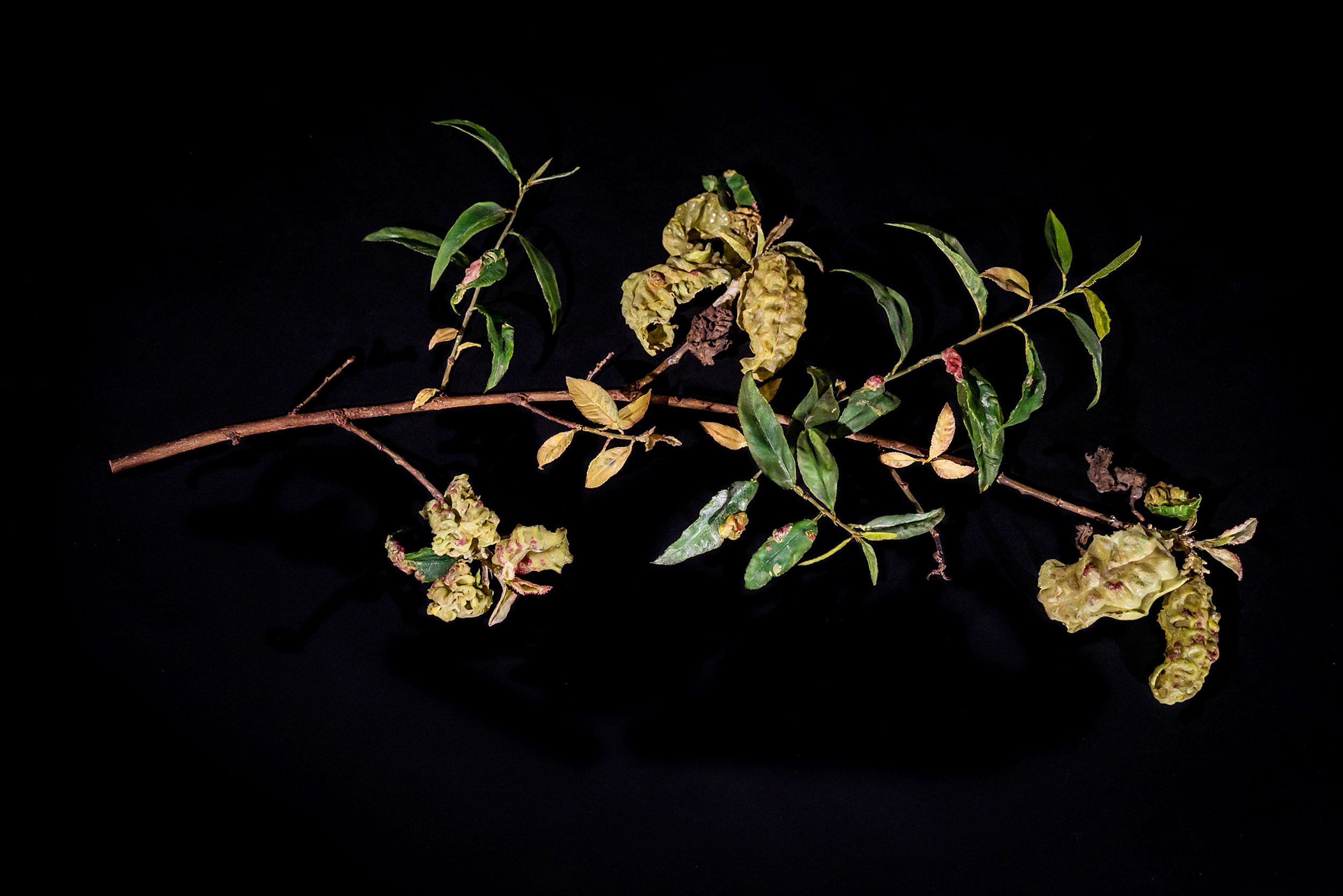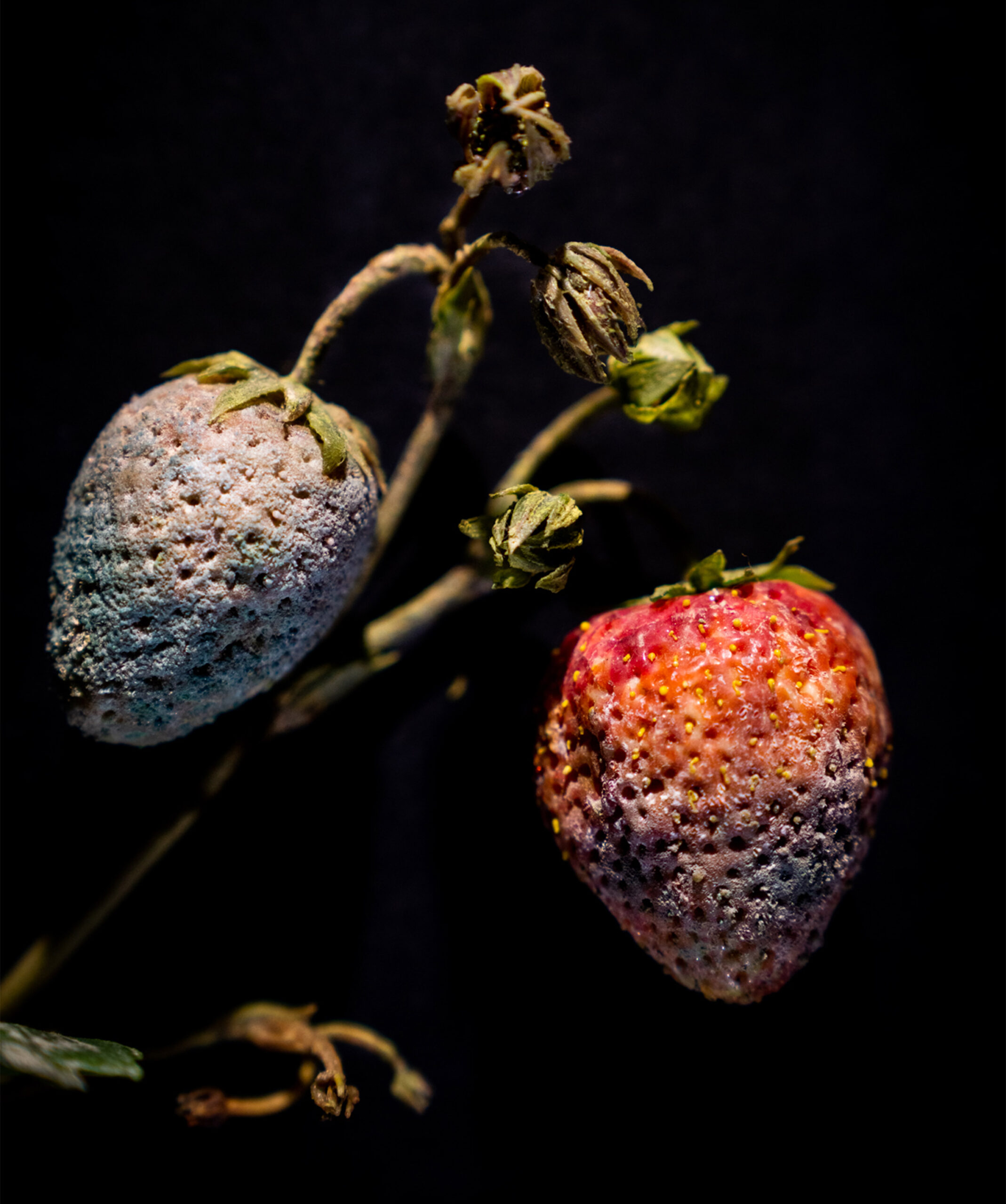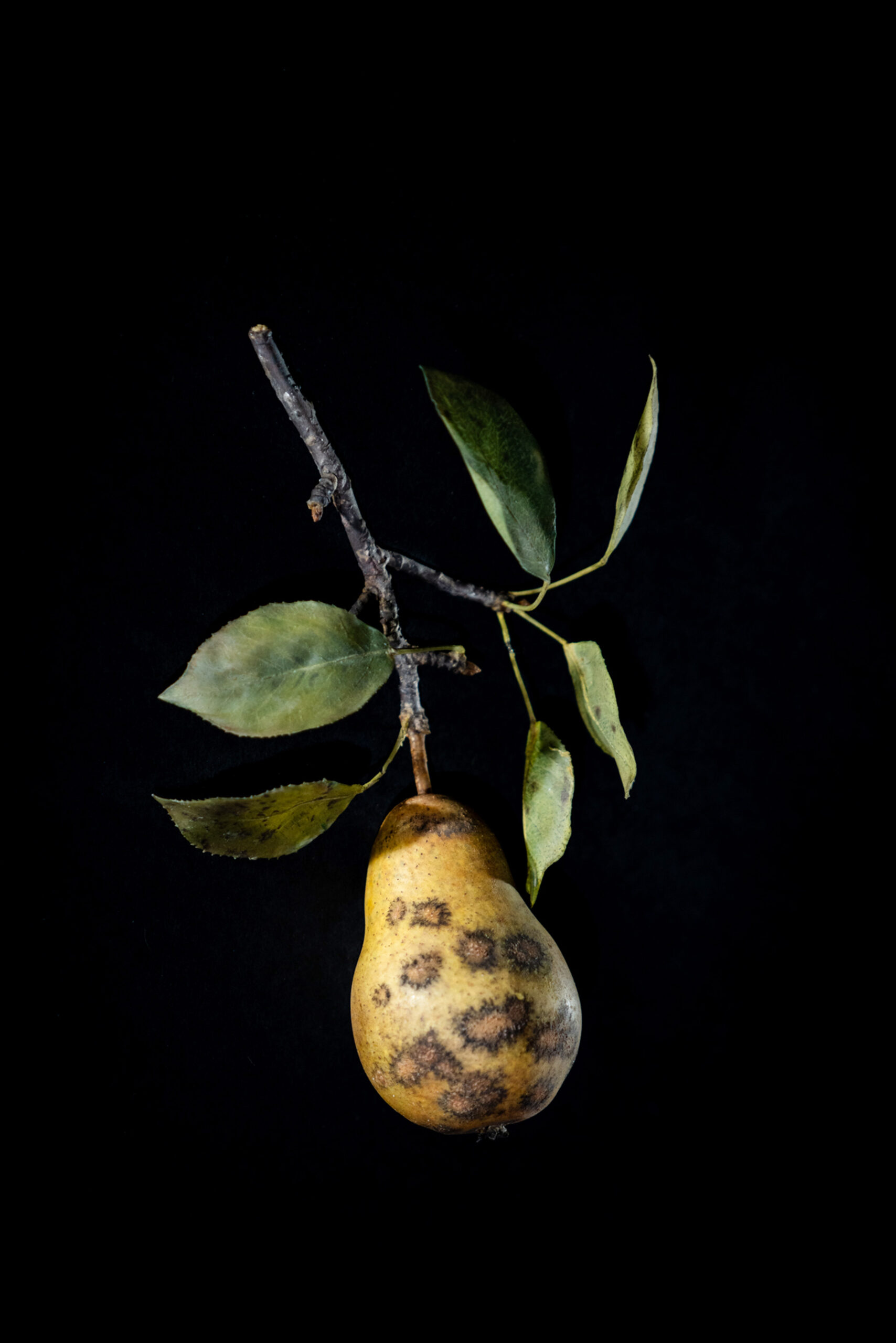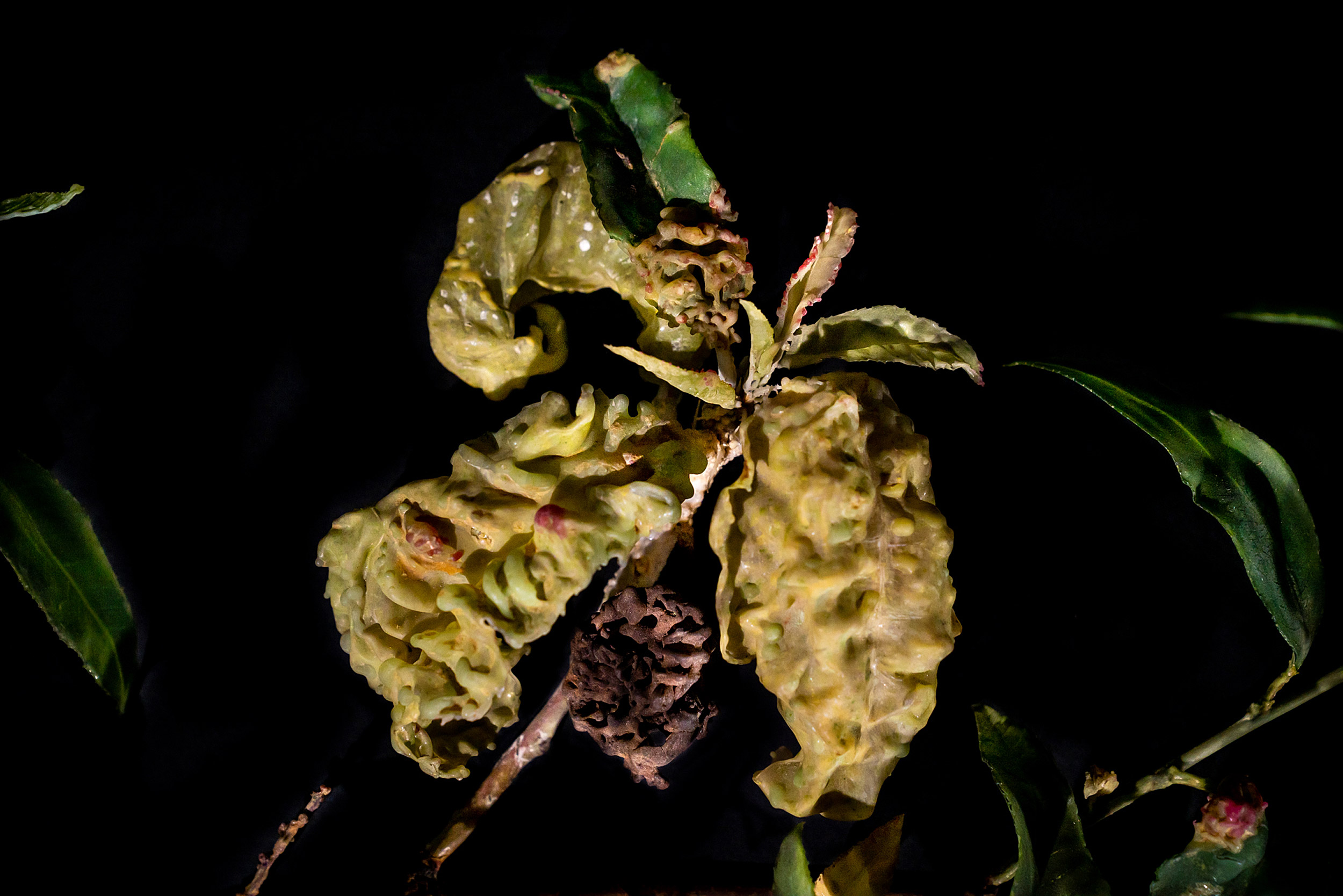The marvel of fruit rotting

“Fruits in Decay” includes more than 20 glass specimens depicting common agricultural diseases, including peach leaf curl (pictured).
Photos by Jennifer Berglund © 2019 President and Fellows of Harvard College
‘Fruits in Decay’ opens Aug. 31 in the Glass Flowers gallery
While we eagerly await the ripening of our favorite summer fruits, microscopic competitors are at work multiplying and consuming them in a world beyond our sight. If we wait too long, the activity of fungi, bacteria, and other microbes will soon appear as an unexpected blotch, suspicious “fuzz,” or oddly curled foliage. Yet, there is a beauty in this natural decaying process that repeats with each season.
“Fruits in Decay,” a new exhibit in the Glass Flowers gallery at the Harvard Museum of Natural History explores blight, rot, and other diseases on summer fruits.
This special exhibit features exquisitely detailed glass botanical models of strawberries, peaches, apricots, plums, and pears made by famed glass artist Rudolf Blaschka between 1924-32. On display for the first time in nearly two decades, the models capture — with astonishing realism — the intricacies and strange beauty of fruits in various stages of decay.
“Rudolf Blaschka’s last work centered on the creation of these models of diseased fruits. They are the culmination of his lifelong attention to accuracy and innovation. They illustrate the effects of fungi as agents of disease in plants and point to their importance in agricultural systems,” said Donald H. Pfister, curator of the Farlow Library and Herbarium of Cryptogamic Botany and Asa Gray Professor of Systematic Botany.
Astonishing realism is reflected in the strawberry with Penicillium sp. mold, Model 791, Rudolf Blaschka, 1929.

“Fruits in Decay” includes more than 20 glass specimens depicting common agricultural diseases and the effects of fungus such as peach leaf curl, gray mold, brown rot, soft rot, blue mold, shot hole disease, stony pit, pear scab, fire blight, and leaf spot.
Visitors will be able to see the delicate artistry of these celebrated Blaschka specimens Aug. 31 through March 1.
One of Harvard’s most famous treasures is the internationally acclaimed Ware Collection of Blaschka Glass Models of Plants, popularly called the “Glass Flowers.” This unique collection of more than 4,300 models, representing 780 plant species, was created by Leopold and Rudolf Blaschka, a father and son team of Czech glass artists, over five decades from 1887-1936. The Blaschkas were the last in a line of jewelers and glassmakers going back to 15th-century Venice.


Pear with pear scab and a branch with peach leaf curl. Model 798, Rudolf Blaschka, 1929
About the Ware Collection of Blaschka Glass Models of Plants
Professor George Lincoln Goodale, the first director of Harvard’s Botanical Museum, commissioned the collection as a teaching tool and public exhibition. Plant specimens are typically pressed and dried, then mounted on paper herbarium sheets, or they are preserved in liquid. At the time, scientific models were made from papier-mâché or wax, but Goodale wanted a better material to illustrate the plant kingdom.
Goodale saw the Blaschkas’ exceptionally realistic glass models of marine invertebrates in the Museum of Comparative Zoology at Harvard and became convinced that this was the ideal medium for representing plants. Goodale traveled to Dresden in 1886 to visit the Blaschkas’ studio and he persuaded them to create glass models of plants for Harvard. The exceptional artistry and workmanship of these pieces proved readily apparent to all who saw them. Mary Lee Ware, a former student of Goodale’s, and her mother, Elizabeth C. Ware, financed the collection and presented it to Harvard University as a memorial to Charles Eliot Ware, Class of 1834.
The Ware Collection of Blaschka Glass Models of Plants officially opened to the public on April 17, 1893.
The Harvard Museum of Natural History is located at 26 Oxford St., Cambridge. It is an eight-minute walk through Harvard Yard from the Harvard Square MBTA station. For general information visit the website at hmnh.harvard.edu, or call 617-495-3045.









